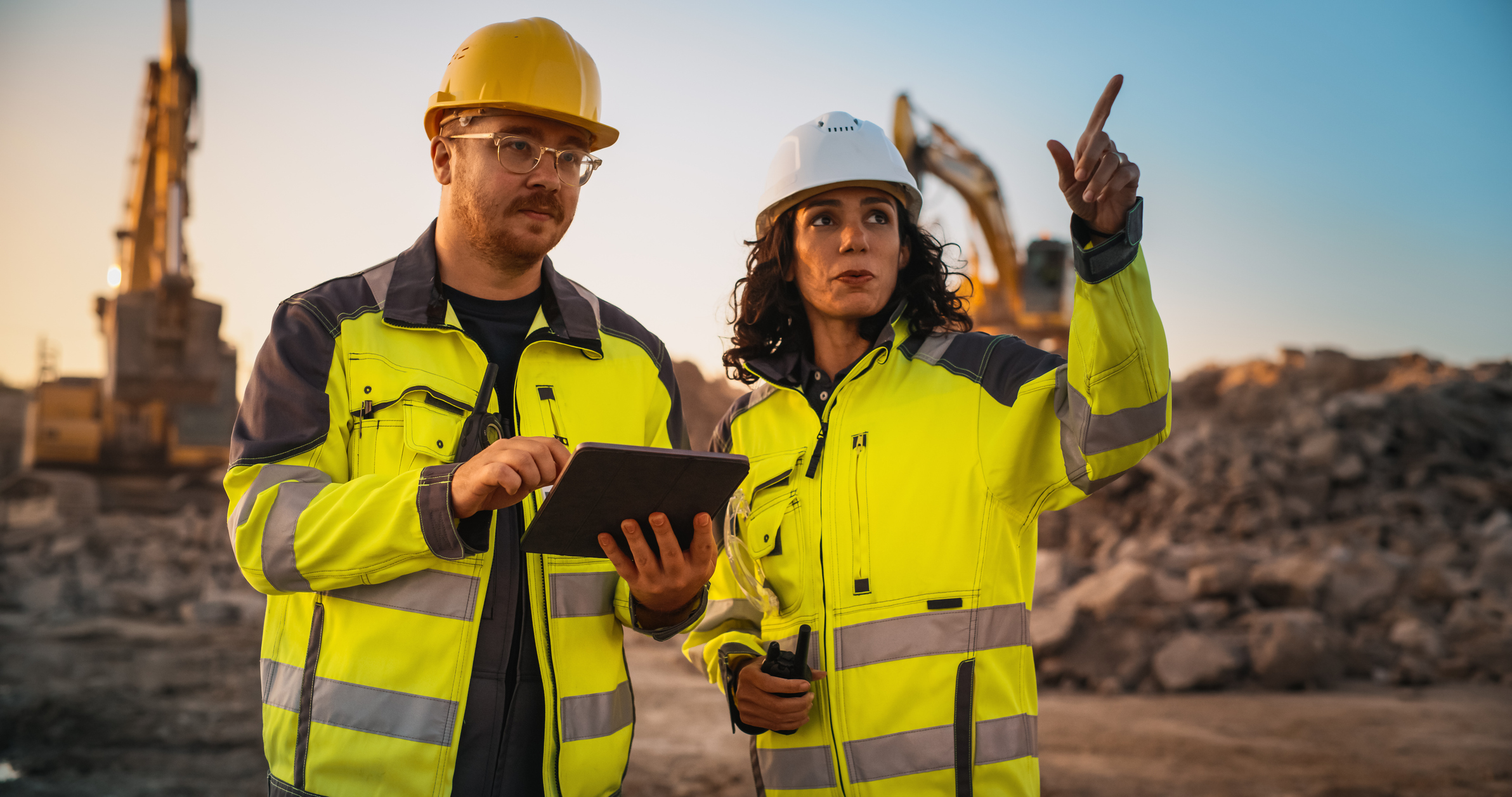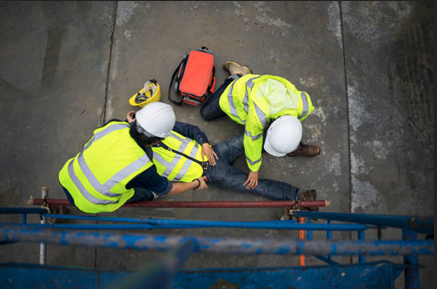How to manage work health and safety risks
Learn how to manage work health and safety risks with actionable steps for identifying hazards, assessing risks, and implementing effective control measures.


Managing risk in work health and safety (WHS) risks is a key component of protecting employees and ensuring operational efficiency in any workplace. This is especially critical in high-risk industries such as construction, mining, manufacturing, and warehousing, where significant hazards are part of daily operations.
Effective risk management requires a clear, proactive approach that involves everyone, from the frontline workers to the executives.
In this article, we walk you through actionable steps that any organisation can take to identify, assess, and control WHS risks.
Step 1: Identifying potential hazards
Effectively managing WHS risks starts with identifying potential hazards in your workplace. Hazards can range from physical dangers like faulty machinery to psychological risks-factors like stress. Finding these risks before they lead to incidents is what separates a proactive from a reactive strategy.
Conduct regular safety audits and inspections

To stay ahead of potential dangers, schedule regular safety audits and inspections. These audits should involve checklist-based reviews of workstations, machinery, tools, and processes to ensure everything is operating safely.
For example, in a warehouse setting, inspections might check for broken equipment, blocked exits, or unsecured materials that could fall.
- Tip: Use a standardised checklist tailored to your industry to ensure nothing is overlooked during inspections.
Involve employees in hazard identifications
Your employees are often your best resource when it comes to spotting hazards. Encourage them to report any unsafe conditions they notice by creating a simple and accessible reporting system. Workers should feel safe reporting without fear of reprisal, as their input can be critical to preventing future accidents. The more visibility you have, the more you can act.
- Tip: Set up an anonymous reporting box or integrate reporting features into your safety management software.
Analyse incident and near-miss reports
Another valuable tool for identifying potential hazards is analysing past incidents and near-miss reports.
These reports can help you spot trends and areas of concern that might not be visible during individual routine inspections. For instance, if several near-miss reports highlight issues with a particular piece of equipment, that equipment should be prioritised for maintenance or replacement.
- Tip: Use the insights from these reports to update safety protocols and training programs to address recurring issues.
Step 2: Assessing the risks associated with identified hazards
Once hazards are identified, the next crucial step is to assess the risks they present. This involves evaluating both the likelihood of an incident occurring and the potential severity of its consequences.
A clear understanding of these factors helps prioritise which hazards to address first and how urgently.
Use a risk matrix to prioritise hazards

A highly effective tool for risk assessment is the risk matrix, which helps categorise hazards based on their likelihood and impact. By plotting hazards on a matrix, you can easily classify risks as low, moderate, high, or critical.
If you’d like to dive deeper into how to effectively use a risk matrix, keep an eye out for our upcoming detailed article on, “What is a Risk Assessment Matrix?” This guide will walk you through its structure and provide tips for customising it to your specific industry needs.
Quantify the risk
To make risk assessments more objective, it’s essential to quantify the risk by considering key factors such as the number of workers exposed, the frequency of exposure, and the potential impact on health and safety.
For example, if many workers are frequently exposed to a dangerous chemical, the risk should be rated higher compared to a rarely used, low-exposure substance.
- Tip: Assign numerical values to likelihood and severity to make it easier to calculate and compare risks across different hazards.
Engage supervisors and safety experts
Risk assessment benefits from a multitude of perspectives. Engage supervisors, safety officers, and industry experts in risk assessment meetings to ensure blind spots are avoided.
Different perspectives can uncover overlooked risk factors and provide innovative solutions for managing them. A supervisor on the floor, for instance, may identify issues that aren’t visible during higher-level audits.
- Tip: Schedule regular risk review meetings with key stakeholders to ensure that assessments are accurate and up-to-date.
Step 3: Implementing control measures
Once risks have been identified and assessed, the next step is to implement control measures to reduce those risks. This is best done using the hierarchy of controls, which provides a systematic approach to minimising workplace hazards.
Apply the hierarchy of controls

The hierarchy of control measures follows a clear order of effectiveness:
- Elimination – Physically remove the hazard.
- Substitution – Replace the hazard with something less dangerous.
- Engineering Controls – Isolate people from the hazard.
- Administrative Controls – Changes the way people work to reduce risk.
- Personal Protective Equipment (PPE) – Provide protective gear as a final line of defence.
By following this hierarchy, you ensure that your control measures are as effective as possible, with higher-order controls generally providing greater protection. Let’s look at each of these a little bit closer before moving on.
Eliminate or substitute hazardous processes
The part that never breaks is the part that isn’t there. Whenever possible, the most effective strategy is to eliminate the hazard entirely. This could mean redesigning a process to remove the risk or substituting hazardous materials with safer alternatives. For example, The transition from solvent-based to water-based paints in many industries has significantly reduced workers' exposure to volatile organic compounds (VOCs).
Introduce engineering controls
If eliminating or substituting a hazard isn’t feasible, engineering controls should be the next focus. These controls physically separate workers from hazards through tools, technology, or equipment modifications.
For instance, adding machine guards, installing ventilation systems to remove harmful fumes, or incorporating automatic shutoff features can prevent workers from being exposed to danger.
Develop administrative controls
Where engineering controls aren’t sufficient, administrative controls can help reduce risk by altering how tasks are performed. This includes changing work schedules to minimise exposure, establishing strict safety protocols, or conducting regular safety briefings to reinforce proper practices.
Ensure proper PPE usage

Finally, where other control measures cannot fully eliminate the risk, PPE should be used as the last line of defence.
To be effective, it is critical to ensure that all PPE is readily available, properly fitted, and that workers are trained on how to use it correctly. Improper use or poorly fitted PPE significantly reduces its effectiveness or even increases risk.
Step 4: Monitoring, reviewing, and improving safety measures
Effective WHS risk management doesn’t end with implementing control measures—it’s an ongoing process.
Regularly monitoring and reviewing safety measures ensures that they continue to protect workers and adapt to new risks as they emerge. This continuous improvement cycle helps prevent complacency and keeps safety at the forefront of operations.
Set up a system for ongoing safety performance tracking
To ensure continuous monitoring, businesses should establish a system for tracking safety performance.
Utilising safety management software like myosh allows organisations to centralise data from inspections, incident reports, and risk assessments. This digital approach enables real-time monitoring of safety performance metrics and helps identify areas that need attention.
Regularly review safety controls and incident reports
At regular intervals (e.g. quarterly per year), review the effectiveness of safety controls and examine incident and near-miss reports to identify any trends or recurring issues. These reviews can help pinpoint gaps in current safety measures or reveal new hazards that require attention.
Solicit employee feedback
Your employees are on the front lines of safety every day, making their feedback invaluable. Solicit input from workers regarding the effectiveness of current safety measures and ask for suggestions on how to improve. Actively involving employees in the review process ensures that you capture practical insights from those most affected by the measures.
Stay ahead of hazards with myosh
Effectively managing work health and safety risks is critical for maintaining a safe, compliant, and productive workplace.
Take the next step in improving your safety management processes with myosh. Start your free trial today and experience how myosh’s risk hazard management software can streamline hazard identification, assessment, and control.
Discover the difference effective risk management can make in your organisation.
Author
Kristina Shields
Kristina Shields is a skilled administrative professional at myosh, a company in the SaaS Safety Technology sector. She manages a variety of roles including hosting HSEQ Webinars and providing sales and operational support. Kristina also serves as Personal Assistant to the CEO, Account Manager, and Database Manager. Her work involves close collaboration with clients to understand their unique industry safety needs, enhancing client relationships and operational efficiency. She is dedicated to integrating innovative safety solutions into their practices, aligning with myosh's goal of making safety a strategic advantage.







